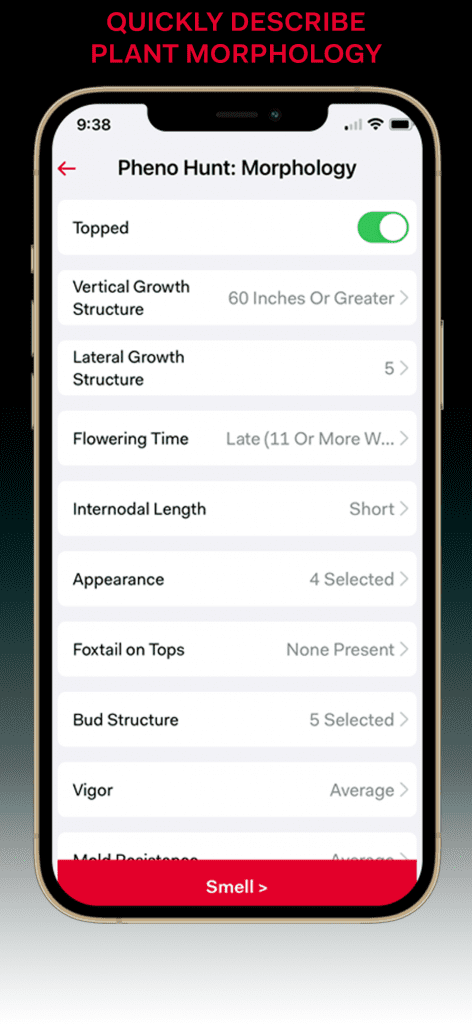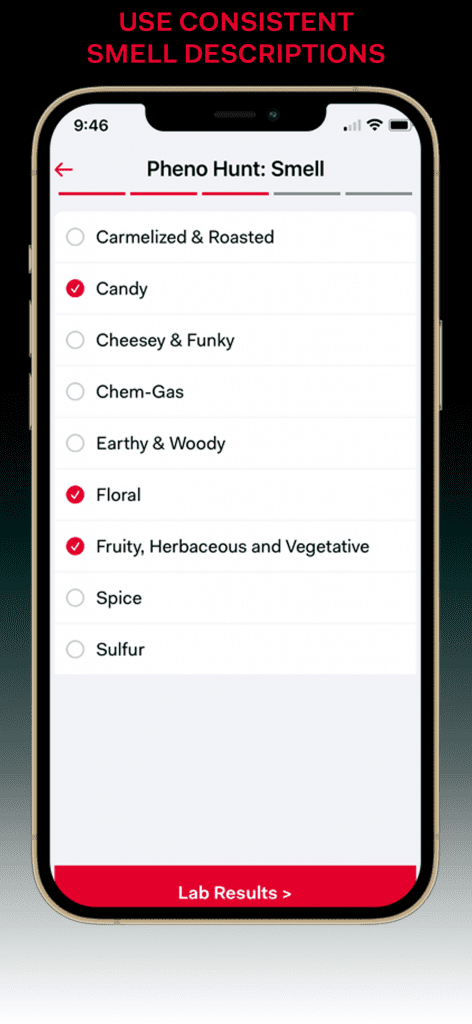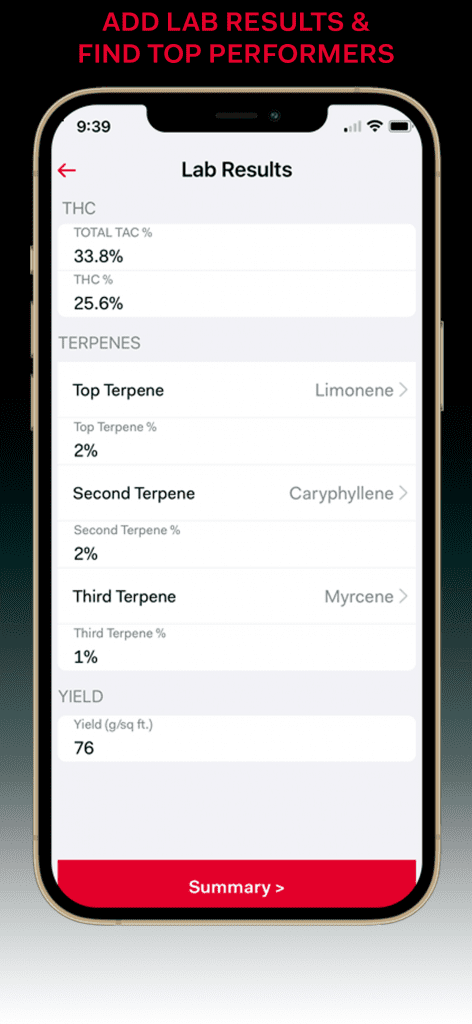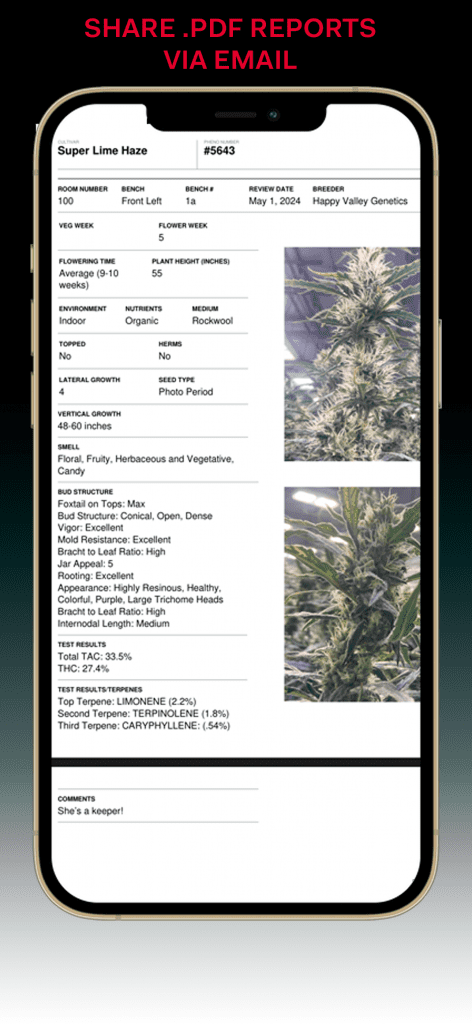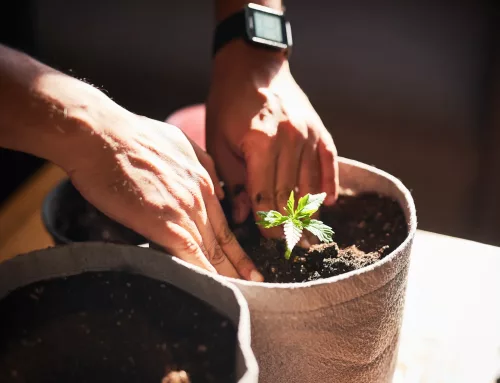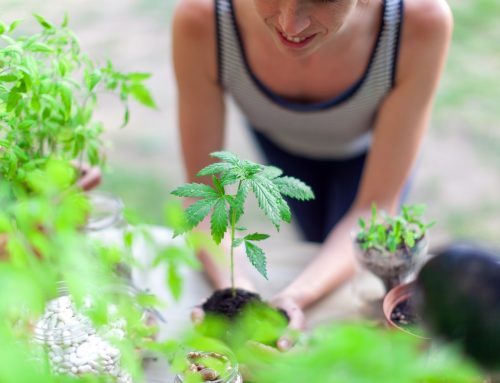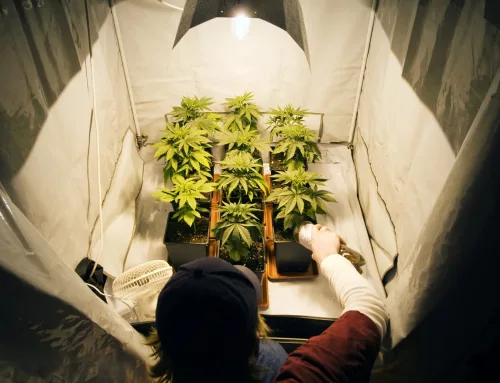Once you’ve grown a few cycles, you’ll start looking around for new opportunities to add excitement to your grow and continue your learning process.
Pheno hunting is the not-so-secret key to differentiating yourself as a grower and breeder.
It’s the constant search for a plant that is new, distinct, and better than what’s out there.
And pheno hunters’ seeds are ripe with opportunity.
Understanding what a pheno hunt is, why pheno hunting is important, and how to pheno hunt in your own garden will give you the confidence to hunt through a pack of cannabis seeds.
This article will explain just that, plus give you some tips and tools for hunting your next pack.
What is a Phenotype?
To understand what a pheno hunt is, you have to understand what a phenotype (commonly referred to as a “pheno”) is.
According to Merriam-Webster, “The observable characteristics or traits of an organism that are produced by the interaction of the genotype and the environment: the physical expression of one or more genes.”
How to Identify Phenotype & Genotype
- Phenotype: The observable characteristics or traits of an organism, which result from the interaction of its genotype with the environment.
- Genotype: The genetic makeup of an organism. While the genotype provides the potential for certain traits, the phenotype is the actual expression of these traits in a given environment.
Pheno hunting focuses on identifying the best phenotypes, which can vary even among plants with the same genotype due to differences in growing conditions and environments.
Ok, so what is a Pheno Hunt?
Pheno hunting is the process of growing multiple plants from seed in search of unique characteristics or traits, preserving desirable phenos as “keepers.”
This involves selecting plants based on specific traits such as cannabinoids, terpenes, trichomes (both head size and density), plant structure, growth patterns, and overall health.
The goal is to find special plants, often referred to as “keepers”, “cuts”, or “unicorns,” that are distinctly different and desirable to keep around for future grows or breeding projects.
Why Pheno Hunts Matter
Pheno hunting is crucial for hobby growers, commercial grows, and breeders because it adds diversity to the market and gene pool.
By identifying unique and desirable plants, growers curate a unique range of profiles that satisfy a diverse set of needs, either as an individual grower, commercial operator, or breeder.
These unique traits can include anything from superior terpene profiles and trichome production to enhanced disease resistance and increased yields.
How Pheno Hunting Adds Value…
-
- For the Home Hobby Grower: Hunting through seed packs gives home growers a chance to find, grow, and consume a product not otherwise available.
Especially in legal states, this gives consumers and patients complete control over product availability, especially for those looking to satisfy very specific personal or medical needs.
Additionally, as a smaller-scale grower, selecting plants that are more efficient helps ensure you’re getting the most out of your space and investment. - For the Commercial Grower: Distinct plants set you apart in a saturated market.
Consumers who find and are drawn to specific profiles that they can only find in plants you’ve selected will be among the most loyal to your products as long as you maintain them. Unique plants command a select, dedicated audience of loyal customers who want a specific, repeatable experience.
- For the Home Hobby Grower: Hunting through seed packs gives home growers a chance to find, grow, and consume a product not otherwise available.
-
- To a Cut: Like most things, the harder something is to get, the more valuable it is.
Some crosses consistently perform well. Same great terps from every plant, same growth structure, same ripening timeline. But most don’t. And that’s not necessarily a bad thing if you’re looking for something special.
It does, however, mean that the amount of plants you have to hunt through varies. The more plants you have to hunt through to find a winner, the more valuable that cut is.
If everyone else is growing the same cut, and you’ve hunted through 100s of seeds and found your own unicorn, yours holds more value than the cut everyone has access to.
- To a Cut: Like most things, the harder something is to get, the more valuable it is.
-
- To a Cross: It’s not hard to make seeds, it’s hard to make good seeds.
Like humans, producing offspring is relatively simple. But that doesn’t mean every child born will be a pot-smoking olympian like Michael Phelps.
To make valuable genetics, you need to have top shelf parents.
If you’re making crosses with the same cuts everyone has access to, there’s nothing inherently unique or valuable to those genetics for growers. They might serve a need (physical plants), but they aren’t delivering the same value as something bred from two parents who went through rigorous selection processes before breeding.
Put differently: Painting with your own colors makes your art stand out.
When breeding, unique selections are crucial for offering distinctly new varieties and avoiding genetic bottlenecks that are often a complaint among growers.
- To a Cross: It’s not hard to make seeds, it’s hard to make good seeds.
We’ve been pheno hunting at Happy Valley since we started in Massachusetts, consistently delivering new, distinct, and desirable phenos for our loyal patrons and supporters.
Now, as we breed new varieties of our own, we’re leaning on these selections to create distinct crosses that produce outstanding plants that are not only fun to hunt through, but also add value to your grow, regardless of size.
How to Pheno Hunt: Tools & Tips for Pheno Hunters
The “how” of your hunt will depend on the size of your hunt and available resources.
Hobby Hunts in grow tents will be different from commercial hunting at scale in a warehouse.
As growers, we often bite off more than we can chew, and that extends to popping more seeds than we have space and time for.
All pheno hunting requires careful planning and observation. It’s important to be mindful of this and not scale your hunt past your ability to control it.
Here are some general guidelines to help you get started:
Consistent Growing Conditions
For a proper comparison, you need as many of the variables in your experiment to remain constant as humanly possible. If you’re growing in different pots, under different conditions, using different inputs, it will be much harder to decipher whether plant expressions result from genetics or something else.
I recommend using the same…
- Pot Size: Use the same pot size for all plants for consistency of performance within the same size root zone. If everyone has the same amount of soil to work with, you’ll be able to see which plant(s) do best side-by-side more easily.
- Feeds: Provide consistent feeding schedules of the same nutrients, but note individual plants’ specific needs. Some plants will feed differently, either in concentration or frequency. Make a note of this and adjust accordingly, but try to maintain as similar of feeds as possible.
- Environment: Maintain consistent light, temperature, and humidity levels across all plants. If one plant is in the corner in the dark, it might not perform as well as the others in the center of the room. In that case, it could be hard to determine if plant performance was a result of genetics, or the environment.
What Should You Look for When Making Selections?
Every hunt is different, and what you look for is determined by your end game.
If you grow for edibles, and are solely cultivating for THC content, then things like biomass and bag appeal are irrelevant.
If you grow for extracts, bud structure and color don’t matter.
If you grow for flower, how well a plant extracts doesn’t matter.
With that said, common qualities to look for include:
- Terpenes: Quality, concentration, and distinction
- Vigor: How strong the plant performs in the grow
- Yields: Biomass, cannabinoids, extracts, etc.
- Bag Appeal: Dried flower appearance
- Cannabinoid Content: Variety, concentration, and rarity
- Sexual Stability: Lack of intersex traits
- Defense: Pest and pathogen resistance
3 Tools for Pheno Hunting
The #1 tool every pheno hunter needs is a good note-taking process.
This includes the notepad, app, or spreadsheet itself as well as the tools required to take measurements, scout plants, and monitor efforts.
3 Tool recommendations to get you started:
- PhenoHunter App: This app is the modern upgrade to the dirty, destroyed, and often misplaced “pad & pen” methods of years prior.
The PhenoHunter Mobile App allows you to track and document each plant’s characteristics in your hunt and was developed by Happy Valley Genetics to specifically address the digital need for tracking pheno hunts.
The PhenoHunter App is designed to make it easier to track and review notes all in one place, so it’s easier for their cultivation team to compare and select the best phenotypes.
The app was recently released to the public and allows growers of all sizes to log data during different stages of the grow, as well as post-harvest insights like terpenes, trichomes, THC, and more, providing a comprehensive report of your pheno hunt for easy reference.
- Measuring Tools: Use hygrometers, light meters, and pH testers to document growing conditions throughout the stages of the plant’s life, making it easier to account for abnormalities. Create redundancies with multiple sensors or meters spread throughout the grow for an improved understanding of your hunt’s environment.
- Scouting Tools: Regularly inspect your plants using magnifying lenses, microscopes, and plant flags to observe bud and trichome development, as well as identify any signs of pests, pathogens, or abnormalities like mutations.
Pheno hunting is not just for professionals.
All growers can benefit from discovering unique plants that suit their personal preferences and growing conditions, as well as the lessons learned along the way.
By pheno hunting, you can create a garden full of plants that produce unique and exceptional flavors, effects, and yields.
READY TO HUNT?
Download the PhenoHunter App to get started tracking your efforts,
so you can confidently select the best plants.


